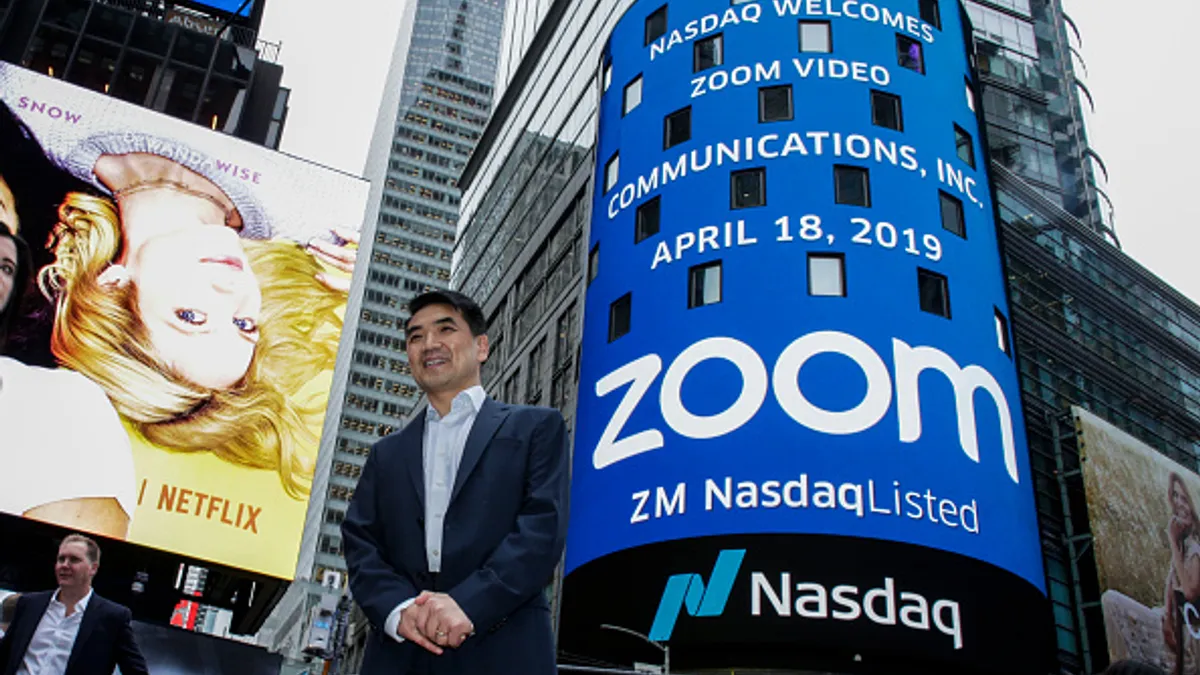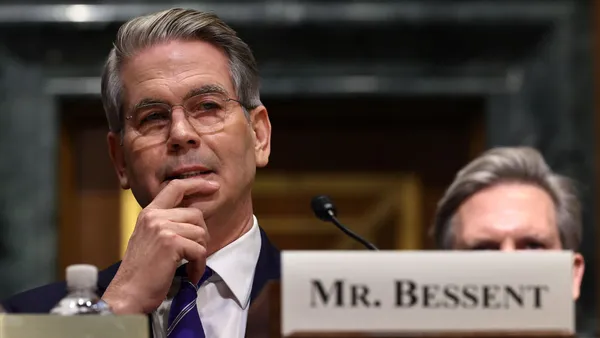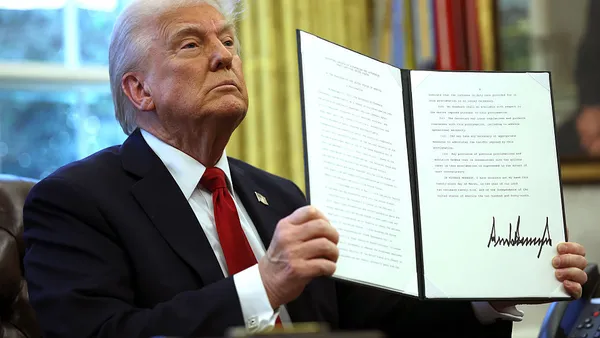Dive Brief:
- Employers expanded payrolls by 143,000 last month and by an upward-revised 307,000 in December, the Labor Department said Friday, bolstering predictions by futures traders that the Federal Reserve will postpone the next cut to borrowing costs until June.
- The robust, two-month gain in jobs and a 0.1 percentage point decline in unemployment to 4% affirmed a Fed decision last month to pause monetary easing. Policymakers in January held the main rate between 4.25% and 4.5%, noting that inflation persists above the Fed’s target and the labor market, while cooling, remains solid.
- The employment report “is consistent with a healthy labor market that is neither weakening nor showing signs of overheating,” Fed Governor Adriana Kugler said Friday in a speech. At the same time, “recent progress on inflation has been slow and uneven, and inflation remains elevated,” she said.
Dive Insight:
Traders in interest rate futures on Friday responded to the decline in unemployment by increasing to 72% the odds that policymakers will hold the federal funds rate at its current level beyond a two-day meeting ending May 7, according to the CME FedWatch Tool. On Thursday they saw a 61% probability of such an outcome.
Policymakers in recent days have echoed Fed Chair Jerome Powell about the need to closely track the economic impact from potential shifts in federal policy.
Powell in a Jan. 29 press conference singled out tariffs, immigration, fiscal policy and regulation as key points of flux, noting “we need to let those policies be articulated before we can even begin to make a plausible assessment of what their implications for the economy will be.”
Kugler highlighted “considerable uncertainty about the economic effects of proposals of new policies.” On Thursday, Dallas Fed President Lorie Logan noted in a speech “volatile financial conditions” and said that “there are many uncertainties right now beyond the near-term inflation and employment data.”
President Donald Trump said Friday he plans to announce next week reciprocal tariffs against trade partners that will affect “everybody,” Bloomberg reported.
On Tuesday, Trump suspended until March 4 25% tariffs on imports from Mexico and Canada after discussions with his counterparts in the two countries. That same day, Beijing imposed retaliatory tariffs on U.S. imports in response to 10% duties on imports from China announced by Trump last week.
Concern about the potential harm from tariffs has eroded consumer sentiment to the lowest level since last July, according to Joanne Hsu, director of the University of Michigan’s consumer survey.
Perceptions about the buying conditions for durable goods and all four other components of the consumer sentiment index fell in the February survey, “in part due to a perception that it may be too late to avoid the negative impact of tariff policy,” Hsu said Friday.
“The decrease was pervasive, with Republicans, Independents and Democrats all posting sentiment declines from January, along with consumers across age and wealth groups,” Hsu said in a statement.
In addition, “many consumers appear worried that high inflation will return within the next year,” Hsu said, noting that survey interviews ended Tuesday. Several studies have warned that the imposition of tariffs will raise prices for consumers and businesses.
Expectations for inflation a year from now rose to 4.3% this month from 3.3% last month, “the highest reading since November 2023 and marking two consecutive months of unusually high increases,” she said.
On only five occasions during the past 14 years have year-ahead inflation expectations surged in a month by a full percentage point, Hsu said.
Logan flagged the importance of containing inflation expectations.
“Well-anchored inflation expectations are critical to success in monetary policy,” she said.
“History teaches that when inflation expectations become unanchored, central banks often can restore price stability only at a great economic cost,” Logan said.
“Expectations won’t stay anchored forever on their own,” she said. “In the end, monetary policymakers have to achieve what the public expects.”
Policymakers focused on inflation may find more encouragement from recent trends in the labor market. Job gains for November were revised up by 49,000 to 261,000, the Labor Department said.
Last month the retail and health care sectors expanded employment while the number of jobs fell in mining and oil and gas extraction, according to the Labor Department.














